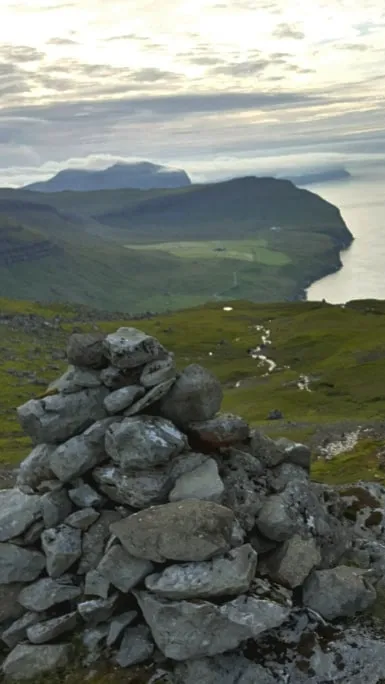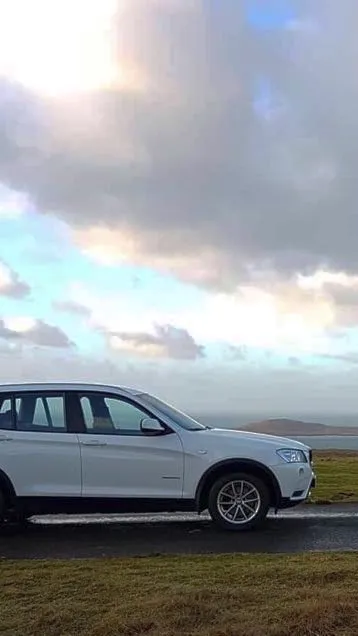Your guide
Your Local Eyes and Safety
Born and raised in the middle of Tórshavn, the capital of The Faroe Islands, Elsa Maria is both an experienced and educated tour guide. If you choose to book a tour with Elsa Maria, she will do her very best for you to experience the beauty of the Faroe Islands in both a safe and personal way.
Meet Elsa Maria

The experience
The Amazing Nature Awaits
Enjoy a brisk excursion into Faroese nature. With Elsa Maria, you can get to see the scenery in its entirety, while hearing its rich history. The islands’ pristine and unspoiled nature yields an experience you won’t forget
Learn a bit more

Book a day tour
Find And Book Your Tour
We've collected all our tours in one page, making it easy for you to get an overview and pick your next Faroese journey. After confirmed booking, Elsa Maria will contact you for further details about your travel and stay in the Faroe Islands.
Try it out. It's easier than you think.
See all our tours

-
We had an amazing trip and I can only recommend it to others. We got to see all the beautiful views and sights, and we had a very unique experience :-)
Ida Christine Brehmer
-
I cannot rate this highly enough. If I could give her more than 5 stars I would! The tour lasted 7.5 hours (after she had checked with the 3 of us involved if going over the 7 hours would be okay). We did a 250km round trip stopping at so many points of outstanding natural beauty. Elsa Marie is extremely knowledgeable and so we gained a huge insight into the history and culture of the Faroe Islands. She is very personable, friendly and thoughtful. She came equipped with tea, coffee, water and snacks as well as spare waterproofs for us. She also made sure we had sufficient comfort breaks. Nothing was ever too much trouble for her. Elsa Marie said that she would send us photos and videos of the trip afterwards and we received that very promptly after the tour. However this was not just an ordinary e-mail with videos and photos attached. She had used the relive app and we received a wonderful memento, plotting our journey along a maps with all the stops we made along with accompanying photos and videos highlighted at the relevant stops along the way. Absolutely first class service.I cannot thank Elsa Marie enough for making the whole day such a wonderful and enjoyable trip. I highly recommend this to others. She goes over and beyond any tour guide I have ever been with.Thank you so much Elsa Marie. I loved every minute of the trip!
Michelle Newcombe
-
Elsa Maria was amazing! I can’t believe how much beauty we saw in one day. I am just so in awe of this place and she made the experience even more fulfilling.
Jessica Goldman
-
This trip was outstanding! We were on the road for almost 8,5 hours (1 and a1/2 hour more than planned) but time just flew by and we had a great time. Elsa Maria is a lady (with big L) who really sets the standard, she has a great personality, has a clever sense of humor, and she really knows how to treat her customers / travellers. She proudly present her island, and what it has to offer, and she rightly do so! Would recommend this trip for everyone, and especially if you are at Faroe Island for just a short periode of time.
Ove Guddal
-
Highly recommend trip that covers a huge array of breathtaking sights. Elsa Marie is the perfect guide; knowledgeable, pleasant and brings that extra personal touch to the experience. Would recommend to everyone visiting the Faroe Islands!
Elin Ibsen Gustavsen
Where is the Faroe Islands?
Located between Great Britain, Iceland and Norway, the Faroe Islands are placed in the middel of the Atlantic Ocean. The Faroe Islands consists of 18 mountainous islands, with a total area of 1,4 square kilometres of land and 274,000 square kilometres of sea area. The total population of the Faroe Islands is 53,000 people (2021) with more people coming in. 40% of all the people lives in Tórshavn, the capital of the Faroe Islands. Tórshavn is in the top 20 of the World’s smallest capital cities both by population and size.
Why visit the Faroe Islands?
The Faroe Islands are unique and beautiful in so many ways. First thing mentioning is the stunning scenery and the unharmed, raw nature. It's a visually unique place with green mountains, crashing waterfalls and colorful villages. If you like shaggy sheeps the Faroe Islands got that covered as well. With a population above 75.000, the sheeps outnumber humans. Tórshavn offers plenty activities. ’The Nordic House’ is one of it’s kind for many cultural events. Tórshavn also offer great restaurants, theatres, museums, concert halls and nightlife opportunities.
Is the Faroe Islands a country?
The Faroe Islands are a self-governing nation under the external sovereignty of Denmark (DK). The Faroe Islands have exclusive competence to legislate and govern the conservation and management of the country independently. Although Denmark is a member state of the EU, the Faroe Islands have chosen to remain outside the EU. The majority of the Faroe Islands wealth comes from the fishing-industry and they therefore negotiate their own trade- and fisheries agreements with the EU.
What's the weather like in the Faroe Islands?
The Faroe Islands are one of the least sunny places in the world. Cloudy skies are the norm here. On a usual day it’s not uncommon to expierence both rough wind and rain, but also sunbeams. This given the high latitudes. Summerdays are long, up to 19 hours between May to July. During summer season nights doesn’t get completely dark; a phenomenon known as ”The White Nights”. The average temperature is between 3°C during winters season and 13°C during the summer. So, temperatures are quite mild and chill all year around. In winter season it’s possible to experience mild freezing temperatures and maybe catch some Northern Lights.
What language do they speak in the Faroe Islands?
The native language of the Faroe Islands is called ’Faroese’. Historically the language is divided into spoken language and written language. The spoken language derives from the old Germanic language, the root of all Nordic languages. It originated over 1200 years ago, when Viking age settlers discovered the islands. Spoken Faroese therefore reminds of other Nordic languages like Icelandic and Norwegian. The written language is quite young though, as it originated in the late 1800s. Faroese is one of the smallest existing languages in the world, therefore it’s currently not easy to translate directly if using common online translation sites.
What currency does the Faroe Islands use?
There are two equal currencies in the Faroe Islands; the Faroese krone (FOK) and the Danish krone (DKK). The Faroese goverment prints its own banknotes, but only Danish coins are used. Both Faroese and Danish notes are equally accepted all over. It’s not commonly accepted to use other currencies than FOK and DKK as fiat money in the Faroe Islands. Therefore credit cards are the obvious choice for turists here. Either VISA, MasterCard, Eurocard, Maestro and JCB is accepted in most shops, restaurants, hotels, etc., but be aware that American Express is more rarely accepted. It’s also possible to withdraw fiat money from one of the many ATMs around the Faroe Islands.